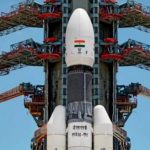It is not very known that the airspace above the Fiji Islands was the first one to ever incorporate the Global Positioning System into its aviation system, that is, the GPS. Therefore, the Pacific island nation of Fiji basically ushered aviation into the 21st Century, changing forever the way we get from Point A to distant Point B.
Before GPS
Before the GPS was developed by the US military in the 1970s from the desire to better the existing navigation procedures of the time, pilots were highly dependent on radar and visual routing. In the 1940s they would follow routes determined by land-based “beacons” in the form of radio signals or visual markers. This was not a very reliable system, since, for example, in Fiji there were only five control towers equipped with a radio beacon. Basically in 80% of the country’s airspace pilots had no radar to rely on.
That was even harder over water, where there were no radio beacons, so pilots used dead reckoning, which is a navigational technique that uses the last known location to estimate the current location. As well as celestial navigation, which uses the positions of celestial bodies like the sun, moon, or a planet, as they measure up with the visible horizon.
By using GPS, an aircraft’s location could be continually and precisely updated by triangulating data between the satellites and its location on Earth. In 1978, was sent into orbit the first of the 24 satellites that followed in order to complete the GPS system globally, starting a 15-year launch project.
It seems the US intended to charge the public to use the GPS system, but after a Korean airliner was shot down over the USSR in 1983, President Reagan announced that GPS would be made openly available, and later companies developed equipment for civilian use.
Therefore, by the end of 1990, 16 GPS satellites were in place and functional, enough for GPS to work around the world, and in 1993 the 24th and final satellite came online.
Fiji and the first official aviation use of GPS
However, even though GPS was fully functional, it was not yet being used in commercial aviation. It first needed to be tested in a controlled environment before it could be used globally.
That’s when Fiji, with its growing tourism industry and demand for flights within its borders decided to improve its navigation system. With 19 commercial airfields and 7 private airports, and more than 300 islands across more than 500,000 sq km of ocean, the country contacted the US Federal Aviation Administration (FAA) to volunteer as the testing ground for GPS navigation.
The FAA decided to fund the trial and supplied the necessary equipment in return for the knowledge it could take away from the project. Therefore, in April 1994, Fiji became the first country in the world to incorporate GPS into its navigation system and proved that GPS can have a major impact and improve aviation making it faster, safer, and more efficient. Later, the technology was adopted around the globe. Now there are actually 31 GPS satellites into orbit, with most of the original 24 having been retired and replaced.
As a result of using GPS, planes can now fly over ocean for hours with precise navigation. Moreover, instead of 100 miles between two aircraft flying in the same direction, now international regulations require just 23. Before, a plane had to fly 18 minutes behind another, but today that time frame has been reduced to 10. Plus, before GPS, airplanes were supposed to fly with enough fuel for a return trip in case they were not able to land at destination, but now they can lose the extra fuel load.
Bottom line is, thanks to the Pacific island nation of Fiji, we are able nowadays to get to our destination faster and more safely than ever in history.
Source: bbc.com










